Is it appropriate to build a sports hall with pu panels and steel structure?
In today’s booming sports industry, the demand for the construction of sports venues is undergoing profound changes. Transitioning from traditional single function venues to comprehensive spaces that balance efficiency, flexibility, and sustainability. For builders, developers, and venue operators, how to meet the requirements of large-span, fast delivery, multifunctional operation, and long-term durability while controlling costs has become a key challenge. The combination of steel structure and PU panels (polyurethane sandwich panel) is redefining the construction logic of sports hall through technological innovation, providing an efficient, economical, and sustainable solution for the global market.
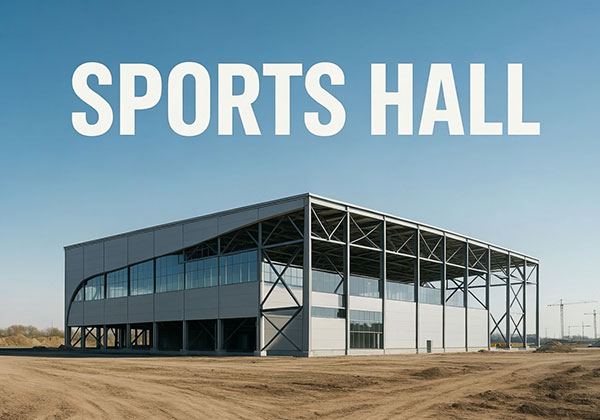
1. Core requirements for sports hall
The usage scenarios of modern sports hall has far exceeded the single function of competition venues. It needs to accommodate diverse demands such as large-scale events, cultural performances, national fitness, and commercial activities, thus placing higher demands on the architecture.
Large span column free space: Core areas such as basketball courts, ice rinks, swimming pools, etc. need to achieve column free coverage of more than 30 meters to avoid structural columns affecting the user experience.
Fast construction cycle: From start to delivery, traditional concrete structures take 6-12 months, while modern venues often require completion within 3-6 months to match event or operational milestones.
Flexible space adaptation: The venue needs to support post functional adjustments (such as basketball hoop relocation, ice rink transformation into a stage), requiring the structure to be adaptable.
Low energy consumption and long lifespan: In long-term operation, air conditioning, lighting, and other energy consumption account for a high proportion, while also needing to resist wind and rain erosion, UV aging, and reduce maintenance costs.
Environmental Protection and Compliance: Many regions are promoting green building certifications (such as LEED, BREEAM), and materials must meet standards such as low-carbon, recyclable, and low volatile organic compounds.
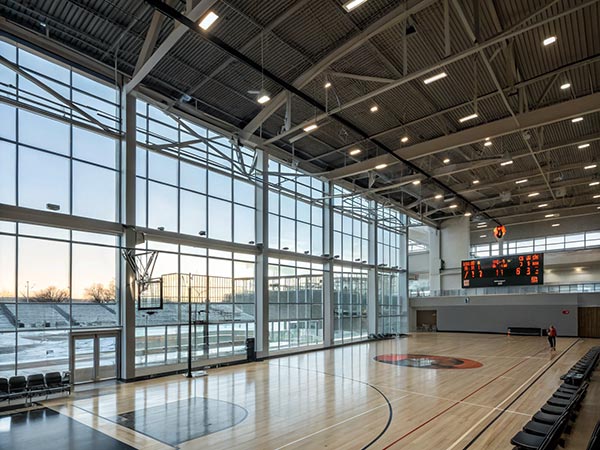
2. Why is steel structure and PU panel the best combination for sports hall?
The combination of steel structure and PU sandwich panel is essentially a collaborative innovation of structural skeleton and intelligent enclosure. Both have accurately responded to all the core needs mentioned above through industrialized and modular construction methods.
2.1 Large span column free space
Steel structures, with their high strength (yield strength up to Q355 or even Q460) and tensile properties, can easily achieve column free spans of over 60 meters (traditional concrete structures can only achieve 20-30 meters). For example, the e-sports hall of the 2022 Hangzhou Asian Games adopts a steel structure truss with a single span of 80 meters and no internal support columns, perfectly adapting to the huge screen viewing needs of e-sports events.
As the enclosure structure, PU sandwich panel weighs only about 40-60kg/㎡ (only 1/10 of concrete wall), combined with the lightweight design of steel structure, further reducing the load pressure of the main structure and providing a more economical foundation solution for large-span.
2.2 Rapid construction
Traditional venue construction requires on-site formwork support, pouring, and maintenance, and is greatly affected by weather conditions. The steel structure adopts factory prefabricated components (accuracy error ≤ 2mm), which only require bolt connection or welding on site, and the installation efficiency is 3-5 times that of concrete. PU panels can also be prefabricated into standard panels (up to 12 meters in length) in the factory, and fixed to the steel structure frame on site with self tapping screws or fixtures, without the need for wet work. The daily installation area can reach 500-800 square meters.
Taking a 5000 square meter community sports center as an example, the total construction period of steel structure and PU sandwich panels only takes 90-120 days, while traditional concrete structure takes 6-8 months, significantly reducing labor and time costs (especially in areas with high labor costs such as Europe and America, this advantage is particularly prominent).
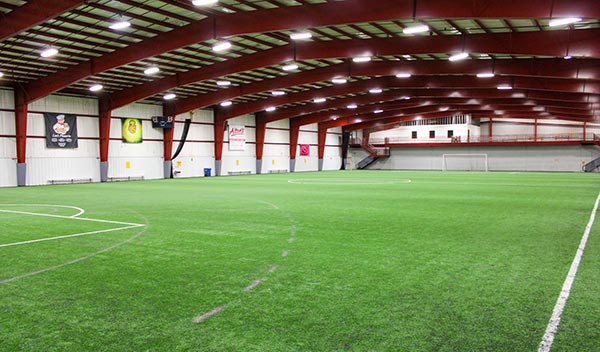
2.3 Multi functional adaptation
The framework system of steel structure naturally supports modular expansion. By adjusting the spacing between steel columns or increasing support, different functional areas can be quickly divided (such as basketball court+training room+commercial facilities). The outer surface of PU panel is mostly metal color coated board (such as fluorocarbon paint, polyester paint), and the inner surface can be selected according to the needs, such as aluminum foil (insulation), fireproof board (sound insulation) or anti mold coating (humid areas), to meet the differentiated requirements of moisture resistance in gyms, sound insulation in theaters, and anti-corrosion in swimming pools.
More importantly, the PU sandwich board adopts a “sandwich” structure (panel+core material+bottom plate), which can be separated by simply removing the fixing parts during disassembly and assembly, making it easy for later functional adjustments or equipment upgrades. A European chain fitness brand used this plan to build venues, which completed three functional renovations within five years. However, traditional venues often have renovation costs that account for more than 30% of the total cost due to structural limitations.
2.4 Low energy consumption and long lifespan
The core material of PU panel is polyurethane (thermal conductivity ≤ 0.024W/(m · K)), and its insulation performance is 3-4 times that of traditional brick walls. When combined with double-layer insulated glass or metal curtain walls, it can reduce energy consumption in venues by 40% -60%. In high-temperature areas such as Dubai, a swimming pool has reduced its air conditioning load by 35% in summer and saved over a million dollars in annual electricity costs by adopting a PU sandwich panel enclosure structure. In the cold regions of Northern Europe, its low thermal conductivity effectively reduces the energy consumption of underfloor heating.
In addition, the metal layer on the surface of PU board can reflect more than 90% of ultraviolet rays. After adding flame retardants (such as halogenated polyether polyols) to the core material, the fire rating can reach B1 level (flame retardant), meeting the building fire protection standards of most regions around the world (such as EU EN 13501-1 and US ASTM E84). Steel structures themselves have excellent seismic performance (ductility 3-5 times higher than concrete), combined with flexible connections of PU panels (to avoid rigid collisions), and can withstand earthquakes of magnitude 8 or above, making them suitable for earthquake prone countries such as Japan and Chile.
2.5 Environmental protection and sustainability
Steel structural materials can be 100% recycled and reused (with a recycling rate greater than 95%), and the carbon emissions during the production process are only 1/5 of those of concrete. Although the core material of PU panel is not recyclable, its lifespan is as long as 25-30 years (far exceeding the 10-15 years of traditional color steel plate), and it can be replaced with panels for repeated use. More importantly, the combination of the two reduces on-site wet operations (such as concrete pouring and mortar plastering), reduces dust and construction waste by more than 70%, and meets the LEED material and resource and indoor environmental quality rating requirements.
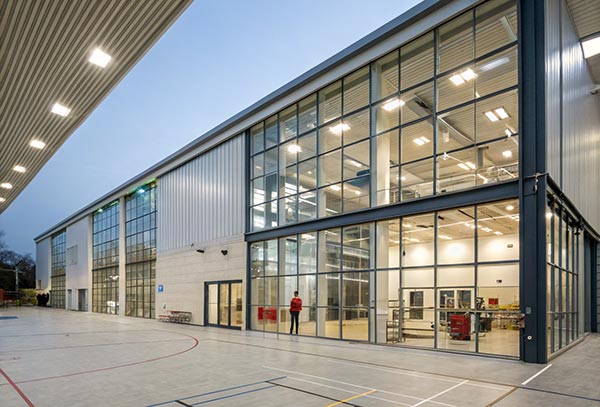
3. Market adaptability
The combination of steel structure and PU sandwich panel is not limited by region, but can be adapted to different climates and needs through technological adjustments:
- High temperature and high humidity areas (such as Southeast Asia and the Middle East): The surface of PU panel is coated with weather resistant color coating (salt spray test ≥ 1000 hours), combined with ventilated ridge design to avoid condensation water accumulation.
- Cold regions (such as Northern Europe and Canada): Increase the thickness of PU panels (commonly 50-100mm) and fill it with high-density polyurethane (density ≥ 40kg/m ³) to improve insulation performance.
- Windy regions (such as Australia and South America): The steel structure is reinforced with wind resistant columns and diagonal cables, and the PU board is double waterproofed with self tapping screws and sealant. The wind resistance level can reach 12 or above.
- Emerging markets (such as Southeast Asia and Africa): Modular design reduces reliance on skilled workers, and local workers can complete installation with simple training, shortening construction time and reducing costs.
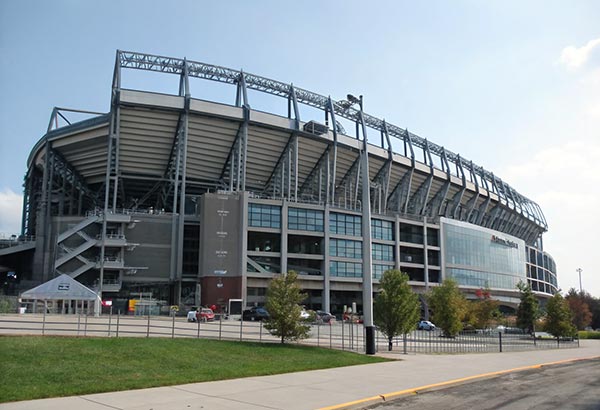
4. Conclusion
From the renovation of Madison Square Garden in New York to the community fitness center in Shanghai. From the high-end integrated sports complex in Dubai to the expansion of the National Stadium in Kenya. The combination of steel structure and PU board has been globally validated for its universality. It not only solves the pain points of large-span difficulty, long construction period, and high energy consumption in traditional venue construction. Through industrialized and modular construction methods, we provide low-cost, high return, and sustainable venue solutions for global buyers.
Against the backdrop of upgrading sports consumption and green transformation, steel structures and PU panels will undoubtedly become the golden combination for the construction of future sports hall. It is not only a building, but also a value system covering the entire lifecycle of construction, operation, and renovation, creating sustainable economic and social benefits for global users.
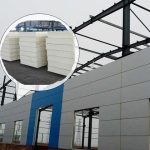
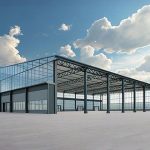
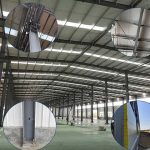
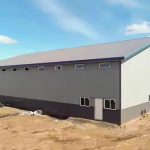
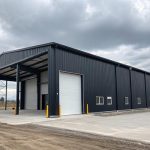
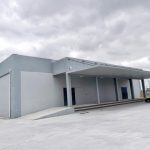
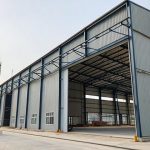
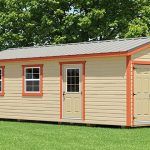
Send us the inquiry form